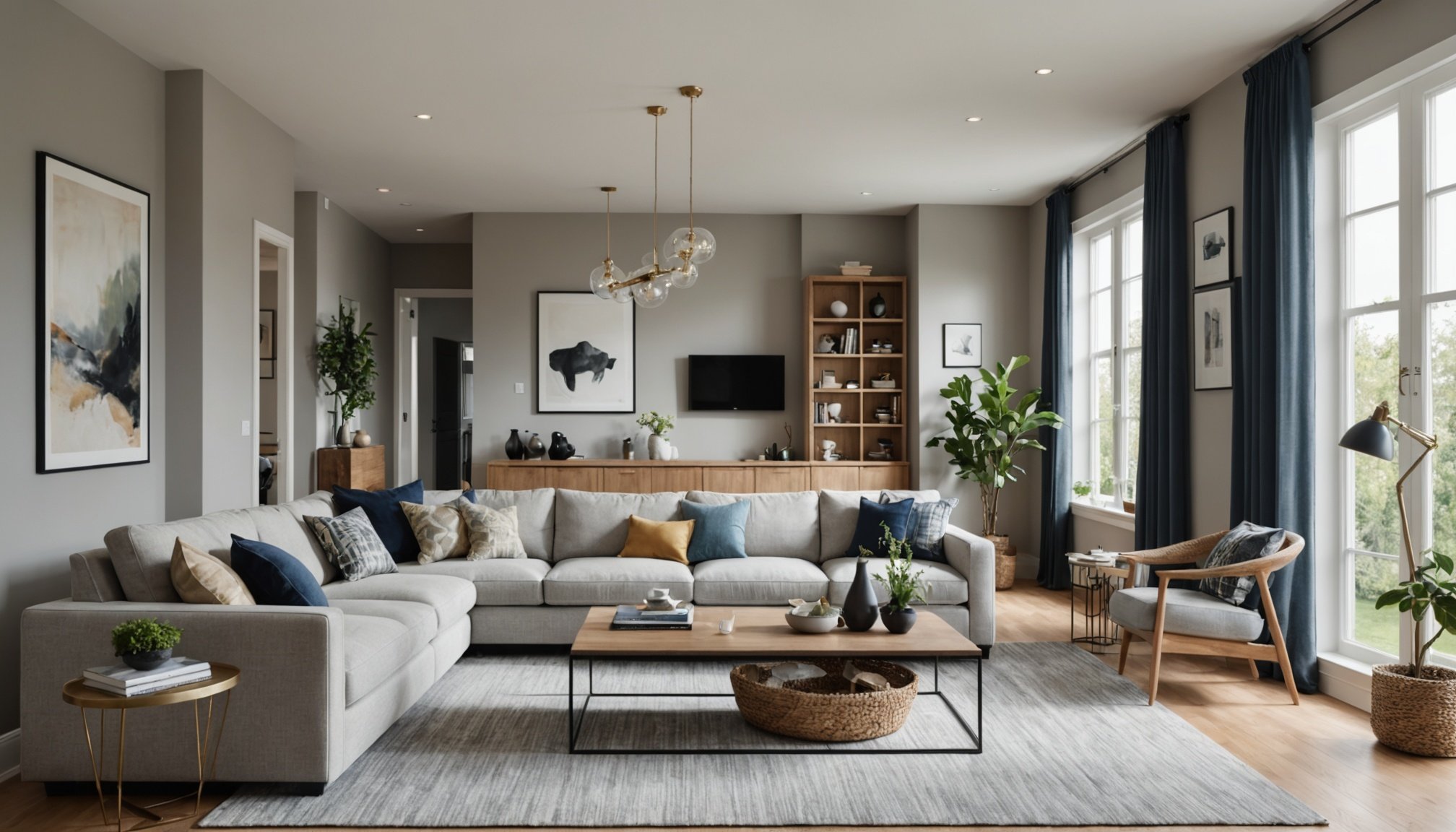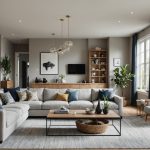Understanding Comfort in Living Spaces
To comprehend comfort within living environments, it is vital to consider its multi-faceted nature that impacts both physical and psychological well-being. A comforting environment goes beyond physical warmth; it includes aesthetics, space arrangements, and emotional connections within the home. These aspects collectively create a transformative living experience.
Aesthetics, such as colour and texture, play a significant role in shaping mood and emotional health. Research shows that certain colour palettes evoke feelings of tranquillity, while others might boost energy, contributing to the psychological benefits of a well-curated living space. Incorporating these elements thoughtfully enhances the psychological benefits of transformed living spaces, promoting a sense of well-being and mental clarity.
Additional reading : 2024’s Vision: Transforming Home Living in the UK;153Eco-friendly Housing Innovations and Their Lasting Impact
The importance of a comforting environment is further highlighted by its positive effects on mental health. Homes that foster comfort can reduce stress levels, improve mood, and even boost productivity, showcasing the direct linkage between a comforting home and overall mental health. It underlines how integral a thoughtfully designed space is to creating a sanctuary that nurtures mental well-being and satisfaction.
In summary, understanding comfort in living spaces is essential for designing environments that enhance psychological benefits and foster holistic well-being. By prioritising elements that contribute to these factors, individuals can elevate their living experiences dramatically.
In parallel : 2024’s Vision: Transforming Home Living in the UK;153Eco-friendly Housing Innovations and Their Lasting Impact
Practical Tips for Enhancing Living Space Comfort
To create a more comfortable and inviting living space, consider implementing simple decor upgrades and minor modifications.
Simple Decor Upgrades
Colours have a profound impact on mood. Opt for a colour palette that reflects the ambiance you wish to create. For instance, soft blues and greens can inspire calm and relaxation, while brighter tones like yellows might energize the space. Similarly, paying attention to textures and materials can greatly influence comfort, with options like plush fabrics or natural fibers adding warmth and a sense of coziness. Incorporating personal touches such as family photos and artwork can further enhance the emotional connection within the home.
Furniture Arrangements for Optimal Flow
Organizing furniture thoughtfully can aid in creating spaciousness and improving accessibility. For small spaces, multifunctional furniture is invaluable, offering practicality without compromising style. The placement of furniture should also maximize natural light, which not only reduces energy use but also uplifts the mood. Therefore, consider arranging pieces to allow light to penetrate deep into the room, creating a brighter and more welcoming environment.
Incorporating Nature
Introducing elements of biophilic design can improve relaxation and well-being. Houseplants are an effective way to bring nature indoors, enhancing air quality and visual appeal. Additionally, designing outdoor spaces—perhaps with seating or a small garden—can provide an oasis of comfort.
Exploring Different Design Styles for Comfort
Every homeowner yearns for the perfect blend of aesthetics and comfort, and various design styles offer unique ways to achieve this. By exploring different styles, you can discover what best suits your home’s comfort zones.
Minimalism and Its Comfort Benefits
Minimalism is more than an aesthetic; it’s a lifestyle promoting clarity and ease. By focusing on decluttering and eliminating non-essentials, minimalism creates spaces that are free and open, allowing mental relaxation. Simplified aesthetics, using neutral colours and clean lines, contribute to a calm atmosphere. Key minimalist elements include functionality, quality over quantity, and space optimization.
Cozy and Rustic Trends
Cosiness and nostalgia define rustic trends, which use textures like wood and wool to evoke warmth. Elements such as exposed beams, vintage accents, and earthly colour schemes create an inviting and homely feel. Achieving this aesthetic in modern homes involves blending these rustic aspects with contemporary elements, balancing the traditional and the new.
Modern Comfort Designs
Modern design prioritises sleekness and utility. Characteristics like open layouts, minimal ornamentation, and innovative furniture enhance living experiences. Incorporating smart technology can streamline daily routines, reducing stress. This design style focuses on cleanliness and organisation, which contribute to stress reduction, helping maintain a serene and practical living space.
Evidence-based Benefits of Transforming Living Spaces
In recent years, research has significantly advanced our understanding of the relationship between environment and mental health. Studies show that thoughtfully designed living spaces can lead to substantial mental health improvement. Features like well-chosen colour palettes, natural light, and green elements have been linked to reduced stress and enhanced mood. These psychological benefits provide an invaluable foundation for creating a home that truly nurtures its inhabitants.
Moreover, a comfortable environment can also serve as a productivity booster. With increasing numbers of people working from home, the impact of the home environment on focus and productivity has become more pertinent. A well-organized and aesthetically pleasing space can help maintain concentration, reduce distractions, and heighten work efficiency.
Additionally, the long-term impacts of sustainable design choices are profound. Eco-friendly adaptations, such as energy-efficient lighting and temperature management, not only contribute to environmental sustainability but also foster long-term lifestyle benefits. In the long term, these choices often result in lower energy bills and create healthier, more comfortable living environments. Embracing sustainable practices can also inspire a lifestyle that prioritises well-being and thoughtful consumption, paving the way for a more balanced and fulfilling life.
Analyzing Long-term Impacts on Lifestyle
In today’s fast-paced world, the long-term impacts of home design on lifestyle changes are increasingly crucial. A thoughtfully designed space not only improves daily living but also fosters sustainable comfort with lasting effects.
Personal Well-being and Satisfaction
Home comfort is intricately linked to overall happiness. When individuals intentionally design their spaces, they enjoy profound psychological benefits. Features like natural light and aesthetically pleasing elements contribute to a long-term uplift in mood and mental health. A comfortable living environment enhances personal relationships as it supports positive interactions and shared memories.
Economical Considerations
Design strategies that focus on cost-effectiveness can lead to significant savings. Energy-efficient renovations are especially beneficial, providing long-term reductions in energy bills. By evaluating the value of investing in comfort enhancements, homeowners can ensure they make smart choices that benefit both their finances and well-being.
Future-proofing Your Living Space
Adapting to evolving needs is vital for lasting comfort. Trends in home modifications now lean toward adaptability, meaning your living space can be adjusted to suit changes over time. Creating spaces that serve multiple purposes allows for seamless transitions, ensuring a legacy of comfort for future generations.





